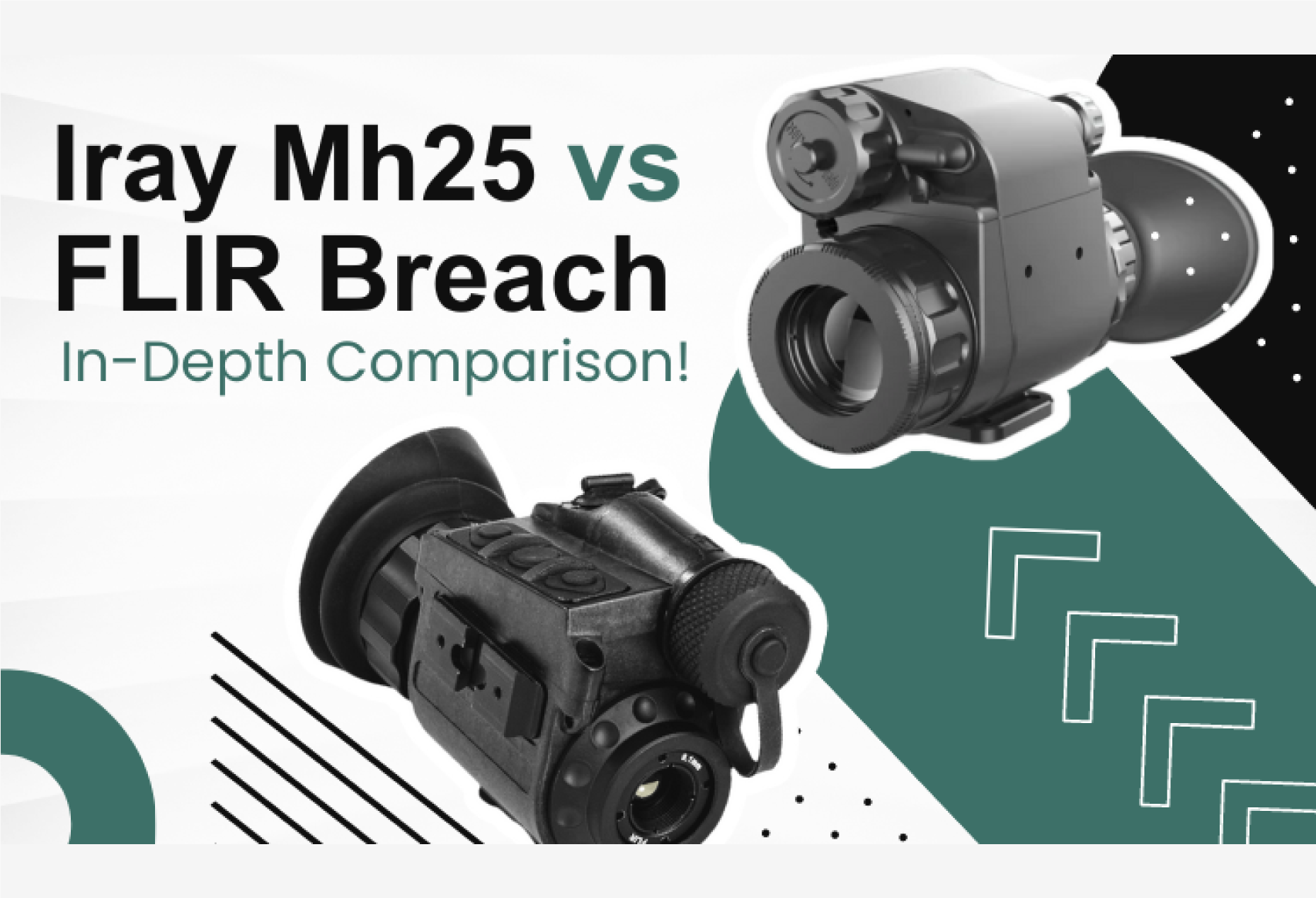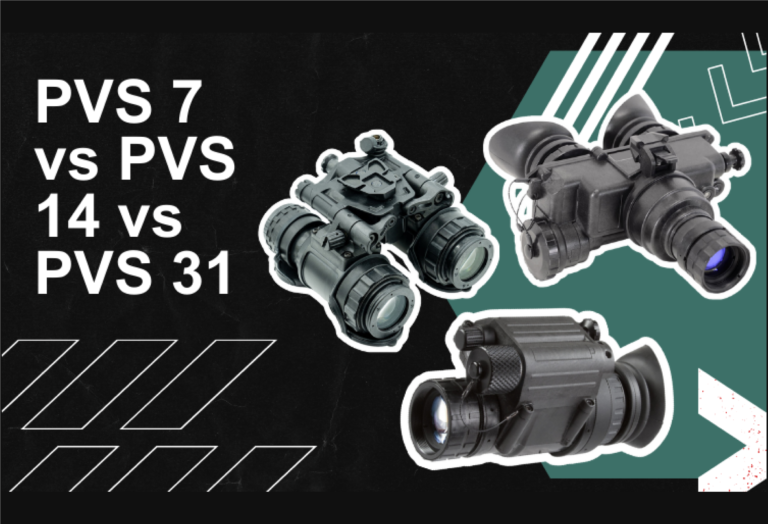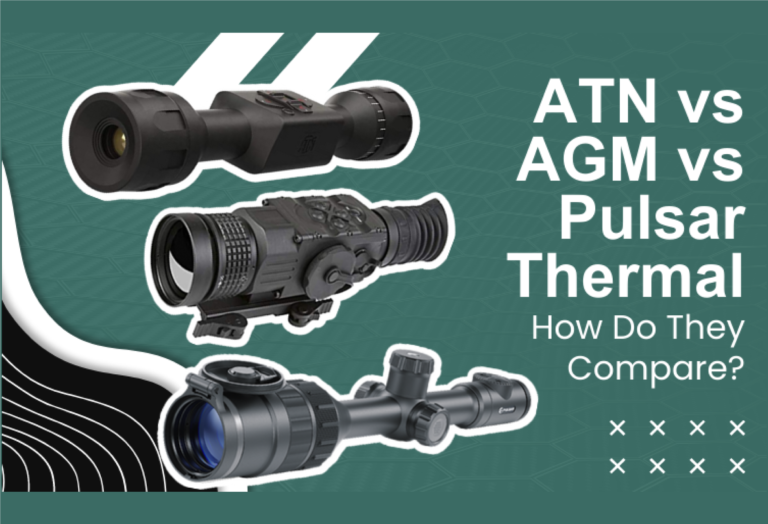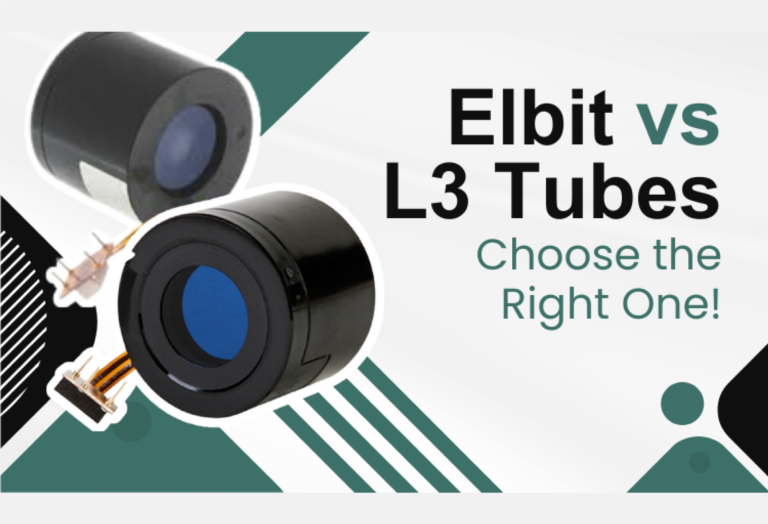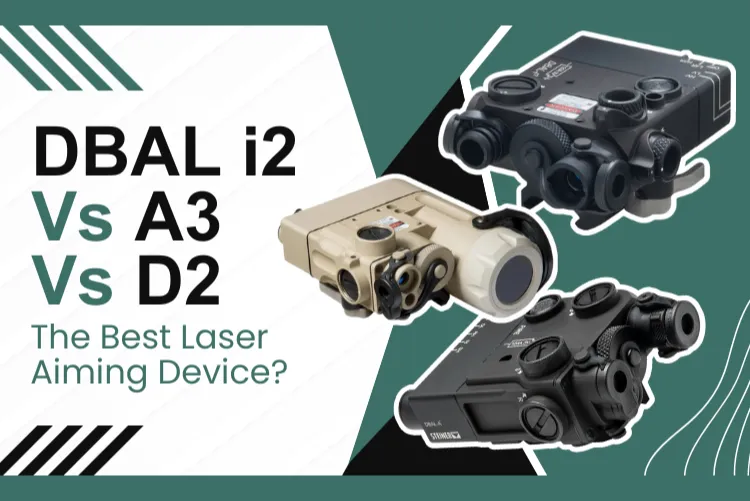I-Ray MH25 vs. FLIR Breach: Which Thermal Imaging Monocular Is the Best?
When you need to buy a thermal monocular, there are many possible options in the market. But in this case, you’ve to pay close attention to which features you need the most. After that, you can easily make a choice!
Let’s check some practical uses and benefits of thermal imaging monoculars and how they can be integrated into various industries and activities
So, Which one is better, Iray Mh25 vs FLIR Breach?
In Iray Mh25 vs FLIR Breach, Iray mh25 is better with its digital magnification and display resolution. Also, FLIR breach is better with its image polarity, refresh rate, and F-ratio. FLIR breach is also lighter and more battery efficient. But Iray Mh25 is used in important sectors like the military.
But that’s clearly not it. We have prepared for you, a very detailed comparison outline so that you can choose the best one. So stick with us!
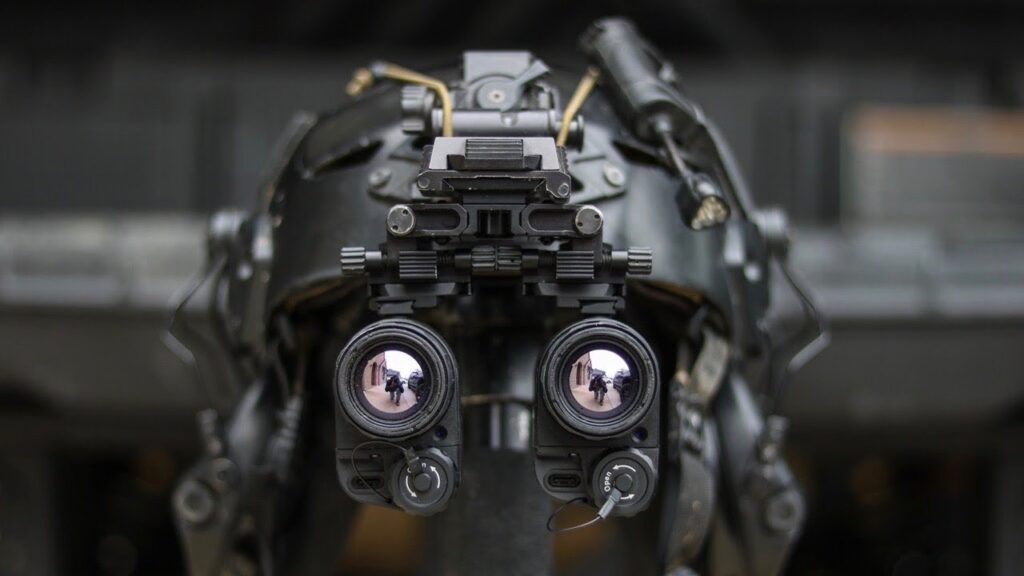
Iray Mh25 vs FLIR Breach: Detailed Comparison
The Iray MH25 is the complete multi-functional smallest thermal imaging monocular. It has the capability of being used either as a handheld monocular or as a monocular mounted on a helmet.
On the other side, the FLIR Breach is a very compact thermal monocular. This can detect heat signatures even while operating in complete darkness.
Below is the key difference between Iray mh25 and FLIR breach thermal monocular.
General Comparison:
| Iray mh25 | FLIR Breach | |
| Lens | 25 mm | 9.1 mm |
| F-ratio | 1 | 1.04 |
| Diopter adjustment | -4 to +3 dpt (Diopter) | -5 to +5 dpt (Diopter) |
| Eye relief distance | 20 mm | 16 mm |
| Optical Magnification | 1x | 1x |
| Digital Magnification | 1x to 8x | 1x to 4x |
| Pixel pitch | 12μm | 12μm |
| Sensitivity | <50mk | <50mk |
| Hor. Display Resolution | 1280 pixel | 320 pixel |
| Vert. Display Resolution | 960 pixel | 256 pixel |
| Refresh rate | 50 Hz | 60 Hz |
| Image polarity | white hot, black hot, red hot, and rainbow thermal signatures | White Hot, Black Hot, Rainbow HC, Ironbow, Sepia, Artic, Outdoor Alert |
| Full color | Full color | Full colour |
| Startup time | 5 sec | 2 sec |
| Price | Check the official Website for the price | Check the official Website for the price |
The focus ratio helps a terminal monocular to measure the actual temperature. So you can say that Flir Breach is slightly better than Iray mh25 in the case of the F-ratio.
Diopter adjustment is the factor by which the user adjusts the image to his vision level. As Flir breach has more options than Iray mh25, then more people can adapt to this thermal monocular.
Sometimes, you can see antlers with thermal monoculars, too.
Eye relief is the distance between your binoculars or scope’s lens and your eye tip.
Both thermal monoculars haven’t the standard value of 78 mm of eye relief distance.
In both cases, the thermal monocular shows the real image with their Optical Magnification.
As you can see, the Iray mh25 has a Digital Magnification of 1x to 8x. On the other side FLIR Breach has a 1x to 4x Digital Magnification.
So you have more options to zoom in and out the objects with Iray mh25. In that case, Iray mh25 is the clear winner.
As the Pixel pitch is the same for both thermal monoculars, there is no clear winner.
Sensitivity is a key feature of a thermal monocular. The higher Sensitivity can take the best image of weather, like fog, smoke, and dust.
The low-sensitivity thermal monocular can take detailed pictures in a small range of temperatures. As both monoculars have the same sensitivity, there is no difference.
According to the table, the refresh rate of the Flir breach is better than the Iray mh25 thermal monocular. So, the FLIR breach has a faster refresh of the image than the Iray mh25.
Normally, a thermal imager will show colder items as black, and hotter objects as white. And those that fall somewhere in between as different degrees of grey.
But in this case, the FLIR breach has more Image polarity.
To take images at night, you need a laser with your night vision along with a thermal monocular.
From the above table, we can see that the FLIR breach starts quicker than Iray mh25.
Size and Weight:
| Iray mh25 | FLIR Breach | |
| Length | 5.03 inch | 5.47 inch |
| Width | 2.8 inch | 2.76 inch |
| Height | 4.8 inch | 1.93 inch |
| Weight | 244.94 g | 209.77 g |
Being Large and heavy in weight, it is slightly uncomfortable to carry an Iray mh25 instead of carrying a Flir Beach. But Both are almost the same size.
For being slightly small In size, you can say that Flir Breach is the winner in this Comparison.
Battery:
| Iray mh25 | FLIR Breach | |
| Type | 16650 or 16340 | CR123A Lithium battery or CR123 |
| Number of Batteries | 1 | 1 |
| Battery life | 1.5 – 3 hours | 13 hours |
| Replaceable | Yes | Yes |
The battery is one of the important features of the thermal monocular. People always look for a better battery condition in comparison to a thermal monocular.
As we can see, the battery life of FLIR Breach is quite a bit better than the Iray mh25. So we find a clear winner here, and that is FLIR Breach thermal monocular.
Appliances:
| Iray mh25 | FLIR Breach | |
| Surveillance | Yes | Yes |
| Hunting | Yes | Yes |
| Law enforcement | Yes | Yes |
| Search & Rescue | No | Yes |
| Military | Yes | No |
| Fire fighting | No | No |
| Thermography | No | No |
People are also looking for the fact that thermal monoculars are usable with their related field appliances. So, in the above table, we listed some of them.
As we can see, the Iray mh25 and FLIR Breach both apply to the appliances of the Surveillance sector.
Similarly, Both thermal monoculars apply to the appliances of Hunting and Law enforcement sectors. For hunting, these products need to adapt to the night Vision Rifle.
In the Search and rescue field, FLIR Breach is better than Iray mh25. Because it can produce more Image polarity and can work with high temperatures.
In the Military sector, you need high zooming in and out digital magnification. In that case, Iray mh25 is the clear winner because it has a 1x to 8x digital magnifier.
In the field of Fire fighting and Thermography, there is no role of the Iray mh25 and FLIR breach.
So We can say that both thermal monoculars are almost similar in this sector.
Durability:
| Iray mh25 | FLIR Breach | |
| Dustproof | Yes | Yes |
| Shockproof | Yes, higher temp | Yes, slightly lower temp |
| Waterproof | Yes | Yes |
| Submersible | No | No |
| Operating temp. min | 14° F | -4° F |
| Operating temp. max | 122° F | 122° F |
| Storage temp. min | Not Specific | -40 ° F |
| Storage temp. max | Not Specific | 140 ° F |
| Environmental rating | IP67 | IP67 |
Durability is one of the key features of thermal monoculars.
The above table shows some factors of durability between Iray mh25 and FLIR breach. As We can see, both thermal monoculars are Dustproof, shockproof, and waterproof. But MH25 has a slightly better shock withstand temperature than FLIR.
Similarly, neither thermal monocular is submersible. But in storage temperature, the FLIR shows better temperature.
So, we can say it’s a tie with MH25 being better at shock to withstand temperature.
Iray Mh25 vs FLIR Breach: Which One Should You Get?
Both Thermal monoculars are good with their features, But choosing one of them depends on what feature you are looking for.
We Divided its features into 5 categories. In general, both thermal monoculars are quite similar, but FLIR’s breach is slightly ahead of Iray’s mh25 in some features. But Iray mh25 is better for Digital magnification and Screen resolution.
In the Size and Weight categories, both are almost similar, but the FLIR breach is slightly better than the Iray mh25 thermal monocular.
In battery categories, the lifetime of FLIR is better than the Iray mh25 thermal monocular.
In Adapting to Appliance, both thermal monoculars are almost the same, but the Iray mh25 works with the military sector while FLIR Breach does not. In the Search and rescue sector, FLIR is adapting where Iray mh25 is not.
In the Durability categories, MH25 is better than FLIR.
So, we’ve laid down all the facts for you. See which one you need the most, and go ahead!
Frequently Asked Questions (FAQs):
How do thermal imaging monoculars work?
Thermal imaging monoculars use infrared technology to detect and capture thermal radiation emitted by objects in the environment. The monocular then converts this radiation into an image that shows the varying degrees of heat, producing a detailed picture of the object or scene.
This technology can detect and display temperature differences as small as 0.1 degrees Celsius, allowing users to see even in complete darkness or through fog, smoke, and other obscurants. Thermal imaging monoculars are used in a variety of applications, including military and law enforcement, search and rescue, hunting, and surveillance.
What is the difference between thermal imaging and night vision?
Thermal imaging and night vision are two distinct technologies with different principles of operation. Night vision amplifies ambient light to produce a visible image, whereas thermal imaging detects heat emitted by objects to create an image. Night vision technology is effective in low-light conditions, such as at dawn or dusk, but does not work in complete darkness.
On the other hand, thermal imaging can provide a clear image even in total darkness but does not require any ambient light to function. Both technologies have their advantages and disadvantages and are used in different applications depending on the user’s needs.
Can thermal imaging monoculars see through walls?
Thermal imaging monoculars are not capable of seeing through walls or solid objects. They detect and display the heat signatures of objects and people in the environment, but they cannot penetrate solid barriers. However, thermal imaging can be used to detect changes in temperature on the surface of walls or other objects, which may indicate the presence of hidden objects or structures.
How far can a thermal imaging monocular see?
The distance at which a thermal imaging monocular can see depends on a variety of factors, including the sensitivity of the device, the size and temperature of the object, and the environmental conditions. In general, most thermal imaging monoculars have a detection range of several hundred yards, with some advanced models capable of detecting heat signatures at distances of up to a mile or more. However, the actual usable range may be affected by factors such as atmospheric conditions, weather, and the presence of obscurants.
Is FLIR better than night vision?
FLIR is not better than night vision because both of them are made for different purposes. FLIR can detect heat energy; on the contrary, night vision simply enhances the light.
Is the FLIR breach weapon mountable?
The FLIR Breach is mountable. It is a thermal imaging camera that can be easily hidden in a pocket. Or, it can be attached to a helmet using its mini-rail function.
What is the detection range of iRay MH25?
The iRay MH25 has a 640×480 12um detection range and a 25mm lens, which enables it to detect objects up to 1375 yards away.
What is the battery life of a typical thermal imaging monocular?
The battery life of a thermal imaging monocular can vary depending on the model and usage. Most thermal imaging monoculars use rechargeable batteries, such as lithium-ion or AA batteries, which can last anywhere from a few hours to several days. Some high-end models feature an extended battery life of up to 10 hours or more. However, it is important to note that using additional features such as Wi-Fi or Bluetooth connectivity, video recording, or high refresh rates can drain the battery faster.
Can thermal imaging monoculars detect human body temperature?
A thermal imaging monocular is capable of detecting human body temperature by measuring the infrared radiation emitted by the body. This is due to the fact that all objects emit a certain level of infrared radiation, and human bodies are no exception. However, it is important to note that thermal imaging monoculars are not medical devices and should not be used to diagnose or treat any medical conditions. They are designed for general observation and surveillance purposes only.
Are thermal imaging monoculars waterproof or weather-resistant?
Many thermal imaging monoculars are designed to be waterproof or weather-resistant, making them suitable for use in harsh environments and adverse weather conditions. This is especially important for outdoor activities such as hunting, camping, or hiking, where exposure to rain, snow, or moisture is common. However, it is important to check the manufacturer’s specifications before purchasing a thermal imaging monocular to ensure that it is waterproof or weather-resistant.
Do thermal imaging monoculars come with any accessories, such as a mount or carrying case?
Many thermal imaging monoculars come with a variety of accessories, such as a mount, carrying case, or lens cleaning kit. These accessories can enhance the functionality and ease of use of the device and may be essential for certain applications such as hunting or tactical operations. It is important to check the manufacturer’s specifications and reviews before purchasing a thermal imaging monocular to ensure that it comes with the necessary accessories and that they are of high quality.
Conclusion
We hope this discussion can help you to pick a thermal monocular between Iray mh25 vs FLIR breach.
Iray mh25 is better with its digital magnification and display resolution, which are important features for a thermal monocular. But in the other categories, Flir breach is slightly ahead of the Iray mh25.
My discussion is over now. Have a great day, and goodbye!

